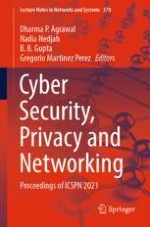2022 | OriginalPaper | Chapter
Leveraging Transfer Learning for Effective Recognition of Emotions from Images: A Review
Authors : Devangi Purkayastha, D. Malathi
Published in: Cyber Security, Privacy and Networking
Publisher: Springer Nature Singapore
Activate our intelligent search to find suitable subject content or patents.
Select sections of text to find matching patents with Artificial Intelligence. powered by
Select sections of text to find additional relevant content using AI-assisted search. powered by
